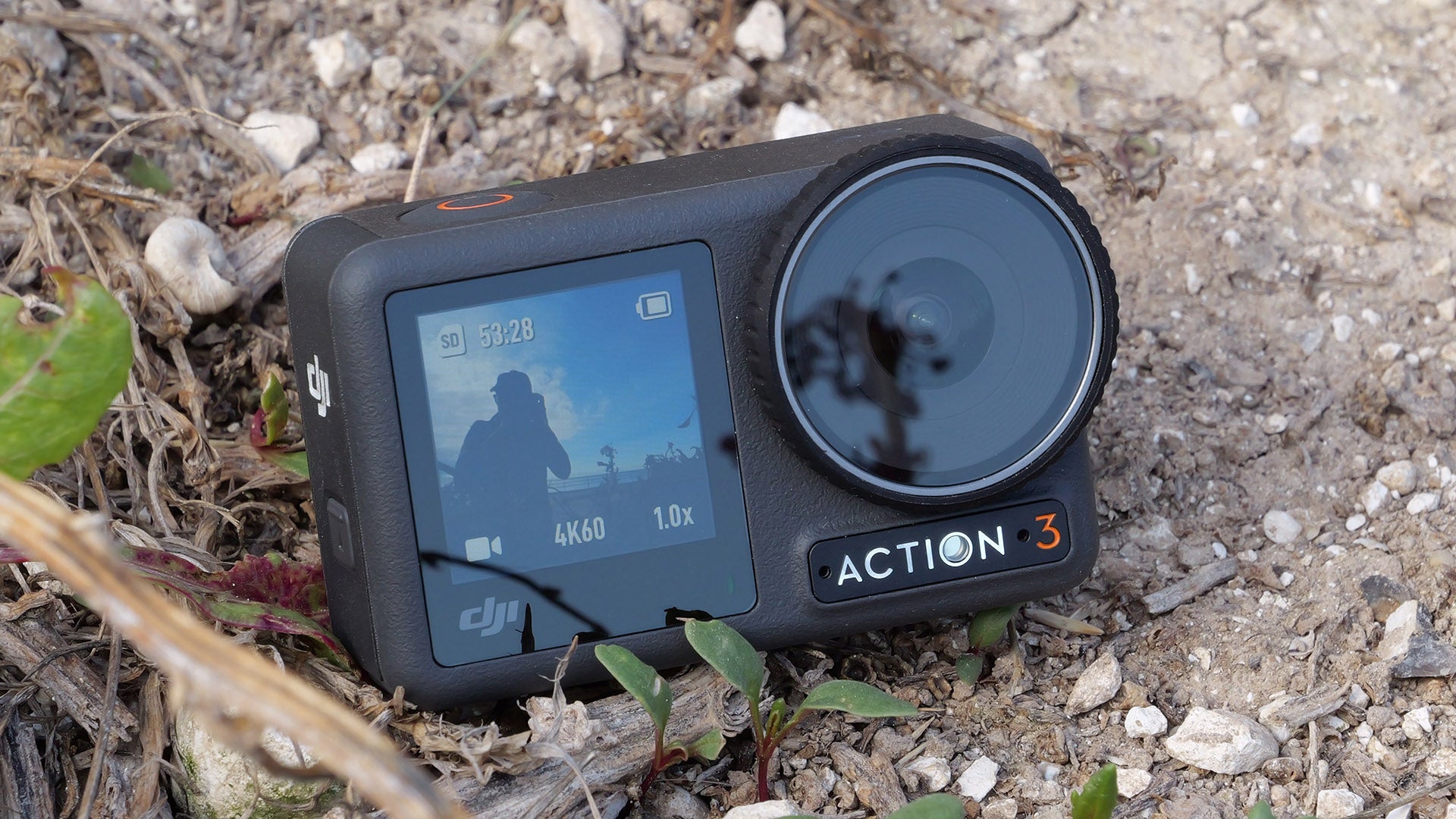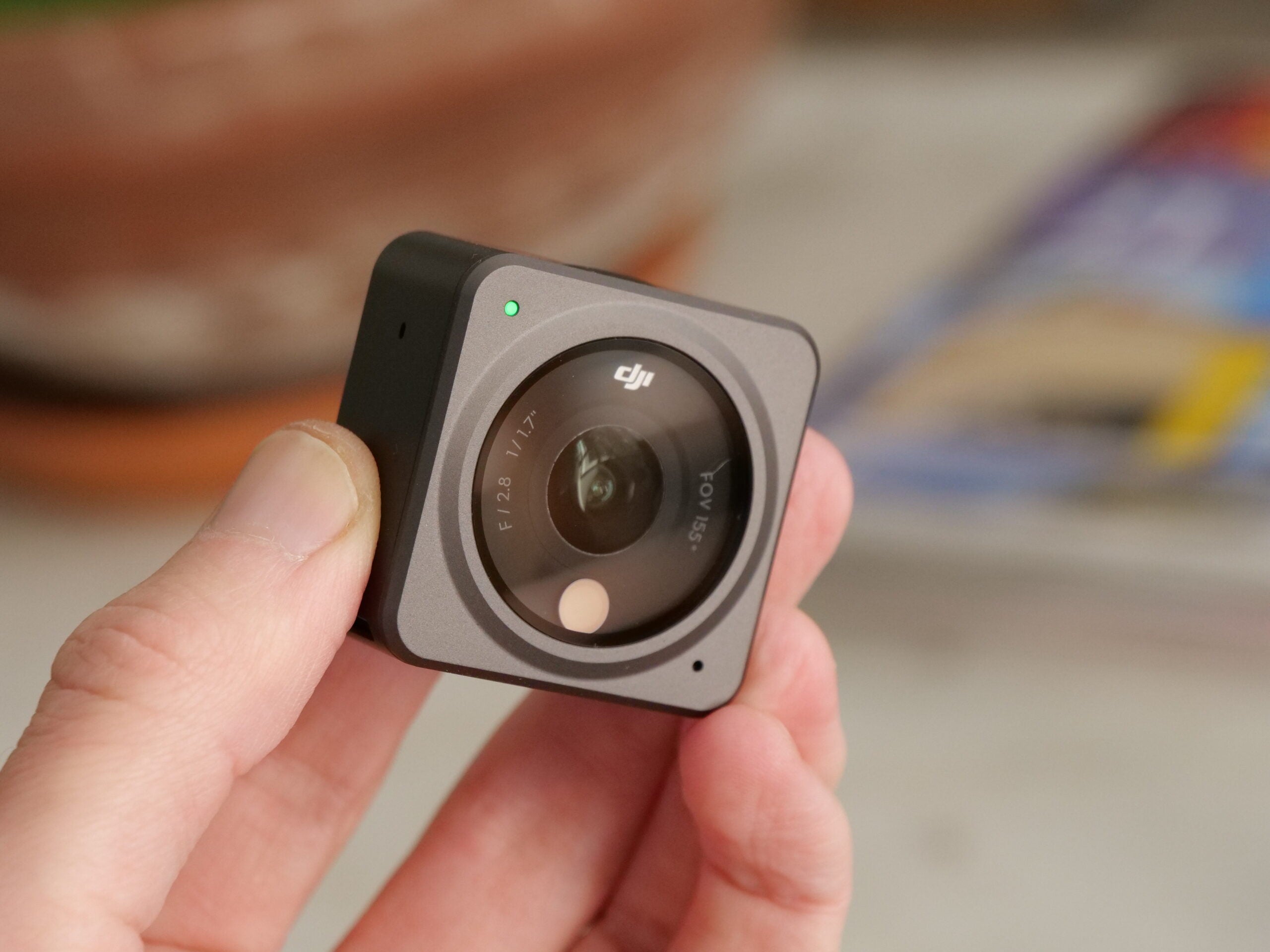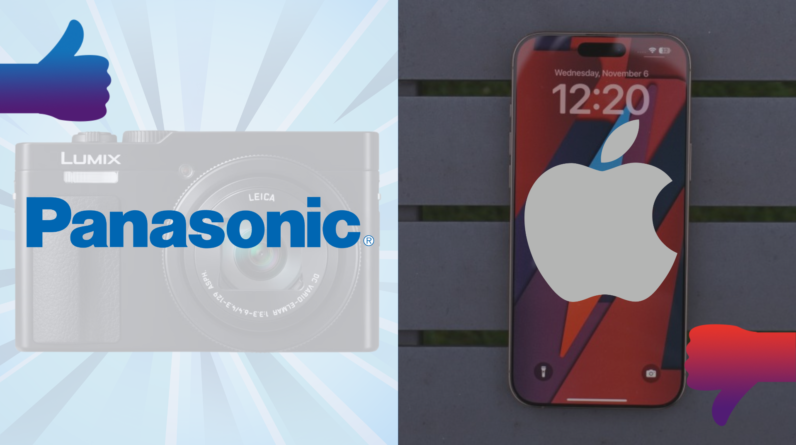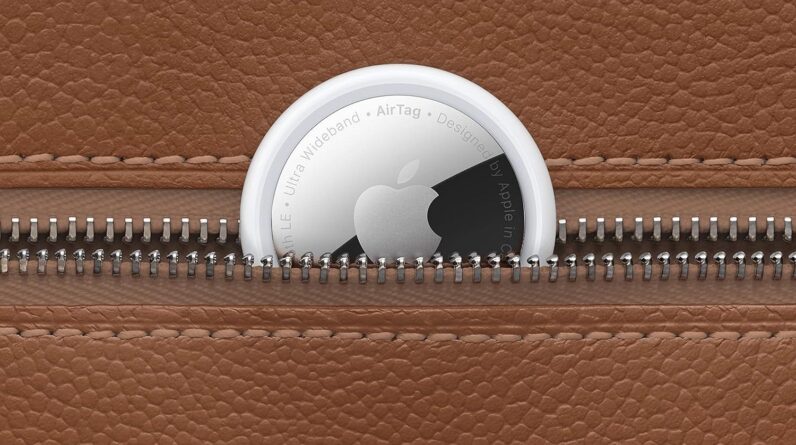
Smartphone cameras have improved rapidly over the years, but they’re rarely a match for a great standalone camera. Whether you’re an experienced YouTuber or a budding TikTok star, you can find all of our favourite vlogging cameras detailed in this guide.
Vlogging cameras pack larger sensors than smartphones, giving them an edge when it comes to dynamic range, low light performance and background blur in your videos. Many cameras also feature external microphone jacks and fully articulated touchscreens for easier framing.
Of course, there isn’t just one type of vlogging camera. We’ve covered all of the bases in this guide with a mix of entry-level mirrorless cameras, pocket-sized gimbals and well-loved action cams.
We’ve also included a list of pros and cons for each, along with links to our full, in-depth reviews. These detail our experiences with the cameras and include sample footage from them to help you choose which one is best suited to your vlogging needs.
For those specifically looking for a camera to take adventuring, make sure to visit our guide to the best action cameras. We also have guides to the best compact and mirrorless cameras for anyone interested in these areas, along with a more general guide to the very best cameras on the market right now. For a more spontaneous way to capture important moments, you can also see our guide to the best instant cameras.
Best vlogging camera at a glance
How we test
We test every camera we review thoroughly. We use set tests to compare features properly and we use it as our main device over the review period. We’ll always tell you what we find and we never, ever, accept money to review a product.

Sony ZV-E10
The best entry-level vlogging camera
Pros
- Small and lightweight
- Good video quality and options
- Fast, accurate autofocu
- Beginner-friendly features
Cons
- No viewfinder
- Big crop with electronic image stabilisation
- Limited touchscreen functionality
If you’re looking for a great vlogging camera to get started with, the Sony ZV-E10 delivers 4K video and beginner-friendly features wrapped in a lightweight package.
The mirrorless camera is packed with features to help YouTubers and Instagram stars step up their video content, including a good-sized APS-C sensor, image stabilisation, real-time autofocus tracking for the eyes and face and flexibility with Sony’s E-mount lens system.
At 343g, the ZV-E10 is one of the smallest and lightest mirrorless cameras we’ve reviewed. There’s no electronic viewfinder, but we found the 3-inch touchscreen to be bright and clear – even on sunny days. The screen also flips out to the side, making it ideal for when you need to record yourself.
The autofocus is fast and there’s a Product Showcase mode to shift the focus quickly for influencers who need to hold objects in front of the camera. We found this mode to be a little fussy at times but it was still an improvement over the standard face detection-based mode when used in these circumstances.
There’s none of the fancy in-body image stabilisation found in the A6600, but the ZV-E10 does come with SteadyShot image stabilisation. This means you get digital stabilisation as well as optical stabilisation with certain lenses.
The ZV-E10 supports clean and rich 4K at up to 30fps or softer and smoother 1080p at 60fps, which is ideal when using the Slow and Quick mode to capture slow-motion video. The Sony can also produce some sharp 24.2-megapixel stills, though vlogging is the clear focus of this camera.
Reviewer: Sam Kieldsen
Full review: Sony ZV-E10
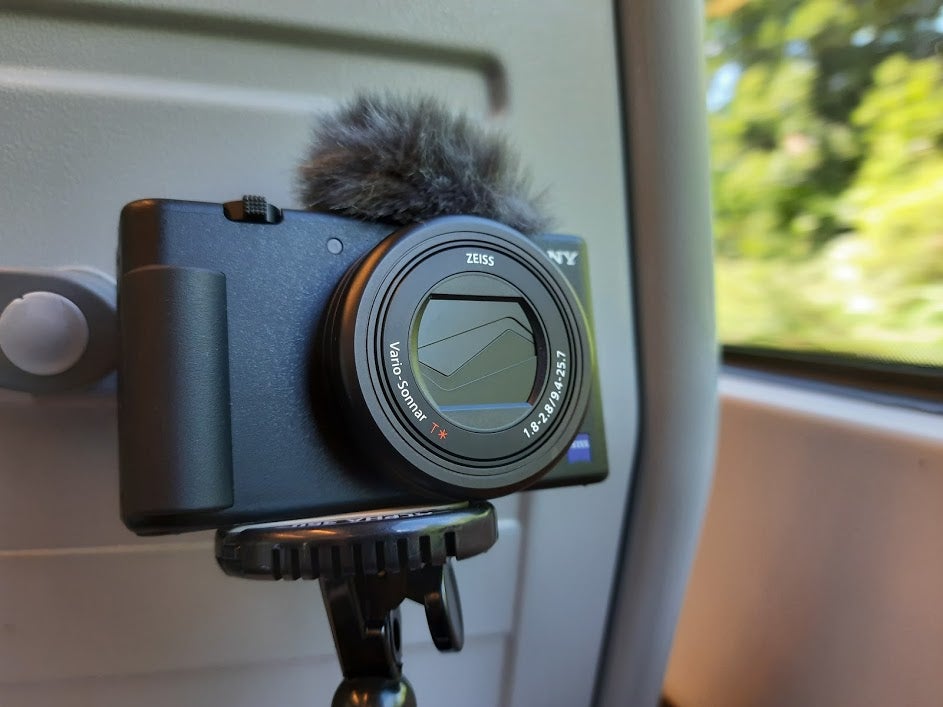
Sony ZV-1
Best one lens option
Pros
- Unbelievable mic quality
- Top-tier autofocus
- Instant bokeh mode
Cons
- Can overheat indoors
- Convoluted menus that are a pain to use
- Micro-USB rather than USB-C
If you like the sound of the ZV-E10 but need something a little more affordable, Sony’s own ZV-1 might actually be the E10’s biggest competition.
Not only is the ZV-1 cheaper (in part due to the fact you don’t need to pick up a separate lens) but it’s also smaller and the built-in lens is bright and sharp, making it a great choice if you’re not bothered about swapping out your lenses with the E-mount system.
At 10.5 x 4.4 x 6cm, the ZV-1 is compact enough to slip into a bag or pocket and there’s a hot shoe on top for those who want to add an external mic, though we found the audio quality on the built-in one to be excellent. There’s also a touchscreen that flips out and rotates, allowing you to see what you’re filming at different angles.
The video quality is fantastic, with the camera capable of capturing bright and vibrant 4K footage. Photos are decent too, albeit not the focus of the ZV-1.
There are loads of handy video features included too, like a real-time bokeh mode with its own dedicated shutter for quick access and two stabilisation options: standard and active. There’s also the same Product Showcase feature found on the ZV-E10.
Unfortunately, we did find this camera had a tendency to overheat quickly when used indoors, so that’s something to consider if you plan to film primarily in your home.
Reviewer: Thomas Deehan
Full review: Sony ZV-1
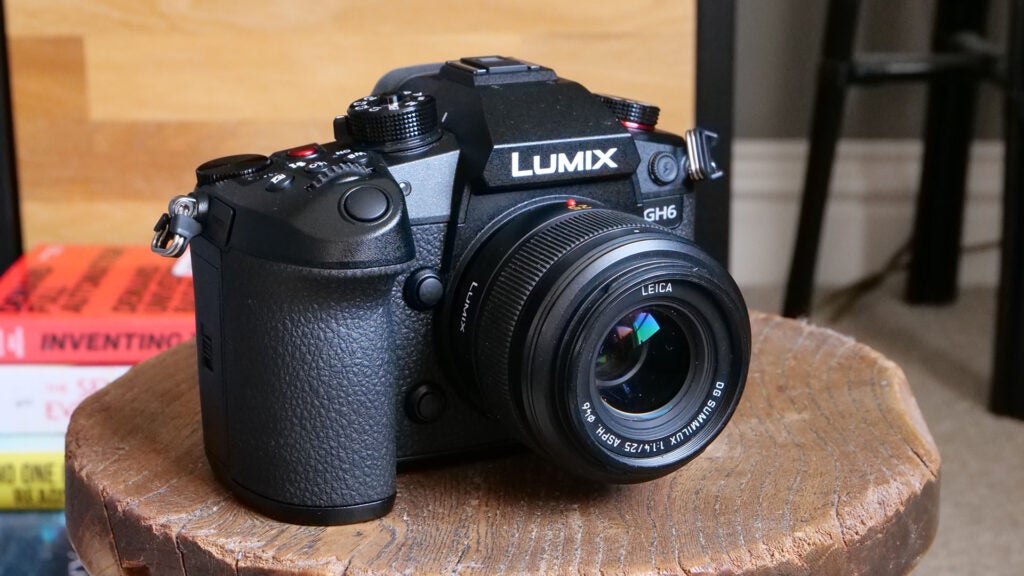
Panasonic Lumix GH6
Best for video quality
Pros
- Massive range of video modes
- Superb video image quality
- No-limit recording times
- Effective image stabilisation
- Easy handling
Cons
- Occasional autofocus quirks
- Some features unavailable at launch
The Panasonic Lumix GH6 is a lightweight and affordable mirrorless camera that offers superb video quality and great stills. However, while the Panasonic can be used to snap images, video remains its biggest strength, making it the perfect choice for vloggers.
The Micro Four Thirds camera features a double-hinged touchscreen and a new cooling system for Panasonic’s GH series, helping it stave off any overheating issues.
The camera is also capable of going beyond the ZV-E10 and the ZV-1’s 4K resolution, and capturing sharp 5.7K video at up to 60fps. There’s in-body stabilisation for up to 7.5 stops of motion compensation, which we found to be very effective, allowing us to record walk-and-talk vlogs without the background bouncing. It even managed to capture stable footage of faraway subjects with a telephoto lens attached.
As far as ports go, there are inputs for headphones and a microphone, along with a full-size HDMI output for external monitoring and recording. There’s also support for CF express Type B memory cards, as well as Apple’s ProRes 422 HQ format.
One con we encountered was that the autofocus lost focus at times when tracking moving objects, though this was still an improvement from the autofocus on the GH5 II. Otherwise, the GH6 is a fantastic mirrorless camera for budding videographers and vloggers in particular.
Reviewer: Sam Kieldsen
Full review: Panasonic Lumix GH6
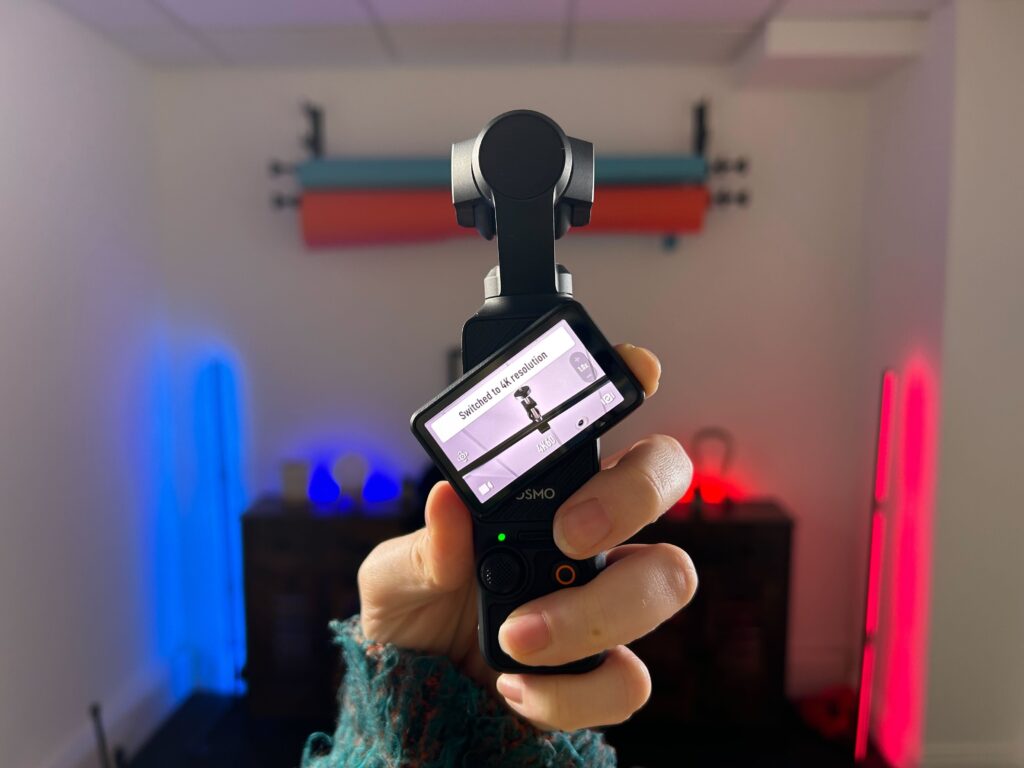
DJI Osmo Pocket 3
Best for smooth video
Pros
- Smooth, detailed 4K video
- User-friendly controls
- Rotating touchscreen for vertical and horizontal filming
Cons
- No waterproofing
- The Creator Combo is expensive
The DJI Osmo Pocket 3 is a versatile camera that makes it just as easy to shoot vertical content for TikTok as it is to capture horizontal video for YouTube.
The camera is capable of capturing sharp 4K/60p footage with bright, realistic colours, along with decent 9.4-megapixel stills. The 1-inch CMOS sensor also improves low-light performance compared to the Osmo Pocket 2, allowing you to get clearer results when shooting at night.
The Osmo Pocket 3 features an integrated gimbal to produce smooth handheld footage wherever you go with the help of three-axis mechanical stabilisation. There are also three follow modes to choose from and three rotation speeds
Anyone familiar with DJI’s Osmo Pocket cameras will find the design of the Pocket 2 comfortably familiar. The limited number of physical controls also makes it easy for new users to get started. There’s a record button for switching the camera on and recording and a joystick for controlling the gimbal movements and zoom, but the more in-depth features can be accessed via the touchscreen and the DJI Mimo app.
One striking addition to the Osmo Pocket 3’s design is the rectangular OLED display that rotates to record in different aspect ratios depending on whether you want to record horizontal or vertical content. The 2-inch touchscreen replaces the fixed square LCD screen found on the Osmo Pocket 2.
The autofocus on the Osmo Pocket 3 is better at locking onto its subject than the AF on previous Osmo Pocket cameras and ActiveTrack 6.0 introduces two new focus features – Face Auto-Detect and the Dynamic Framing mode. There’s a new Product Showcase mode reminiscent of that on the Sony ZV-E10 and ZV-1, while other features include Spinshot, Panorama, Timelapse and Slow-mo in 4K at up to 120fps.
Finally, the battery can capture up to 116 minutes of 4K/60fps video or 166 minutes of 1080p/24fps video and charges three times faster than its predecessor. We found that the Osmo Pocket 3 was able to go from 6% to 100% in less than half an hour.
Reviewer: Hannah Davies
Full Review: DJI Osmo Pocket 3

GoPro Hero 12 Black
Best action camera
Pros
- Sharp and vibrant video
- Improved battery life
- AirPod support makes recording audio easier than ever
Cons
- There are better options for low light
- Still no touch support on the front screen
The GoPro Hero 12 Black is the perfect small rugged camera for recording action-packed vlogs on your next adventure. While not the newest GoPro model (that honour goes to the Hero 13 Black), it remains a very impressive camera as the most recent GoPro we’ve reviewed, beating out rivalling action cams in many respects.
The GoPro Hero 12 Black is a pocket-sized action camera that weighs just 154g and shares a near-identical design with its most recent predecessors. The camera is waterproof up to 10m out of the box, or 60m when paired with the GoPro Protective Housing case.
It includes two small displays: one 2.27-inch rear touchscreen and one 1.4-inch display (no touch capabilities) next to the lens on the front of the camera. Both screens are sharp and easy to navigate, but it would be nice to see GoPro adopt the front touchscreen found on the DJI Osmo Action 5 Pro.
The Hero 12 Black is powered by the same GP2 processor found in the Hero 10, 11 and 13 Black. This, combined with a 1/1.9-inch CMOS sensor, makes it possible to capture 5.3K video at up to 60p or 27-megapixel stills. We found the image quality to be sharp and vibrant when shooting in daylight, though we did notice a loss of detail in low-light settings.
Other familiar features include up to 8x slow-mo and HyperSmooth stabilisation, with the sixth version of this technology including AutoBoost and Horizon Lock. There’s also Hindsight to capture 30 seconds before you hit record, along with Scheduled Capture to begin recordings when you’re absent or asleep – perfect for capturing the stars late at night. Interval Photos allows you to capture stills at fixed intervals, while Timecode Sync wireless synchronises multiple GoPro’s to record at the same time.
If you’re looking for a tiny but incredibly capable action camera, look no further than the GoPro Hero 12 Black.
Reviewer: Hannah Davies
Full Review: GoPro Hero 12 Black
Insta360 Go 3S
Best compact vlogging camera
Pros
- 4K, finally
- Find My compatibility
- Still unbeaten on portability
Cons
- Low-light performance is better, but not great
- Battery downgrade
If you’re looking for a truly tiny action camera, the Insta360 Go 3S takes the cake. The Go 3S might look identical to last year’s Go 3, but the addition of 4K support puts this camera ahead of its predecessor.
The Insta360 Go 3S is more waterproof than its predecessor, allowing it to plunge to depths of up to 33ft up from 16ft. This also puts the compact action cam in line with the GoPro Hero 12 and GoPro Hero 13 Black, though still behind the DJI Osmo Action 5 Pro. That said, the Go 3S features a more innovative design than these rivals, with the tiny camera sliding into the Action Pod to access the 2.2-inch display.
This camera pairs especially well with iOS devices, as it now features Find My support to locate the misplaced camera, along with automatic phone notifications that take you to the editing suite when you shoot new footage. There’s also a new Quick File Transfer button on the camera display, allowing you to send footage over to the smartphone app with a tap whether you’re an iOS or Android user.
The arrival of 4K video capture is a huge upgrade, addressing perhaps the number one reason to skip over the 2.7K Go 3 in favour of its competitors. Like its predecessor, the Go 3S performs best during the daytime, delivering rich colours even during overcast moments. There’s also a new Megaview feature that displays the same wide view of a scene as the ultrawide mode but without the fisheye distortion characteristic of action cameras.
Low-light performance could definitely be better and the battery life is lower than that on the Go 3, but the image stabilisation is outstanding even when filming handheld. If you’re looking for a particularly portable action camera with 4K support, the Insta360 Go 3S is a great choice.
Reviewer: Thomas Deehan
Full Review: Insta360 Go 3S
We also considered…
FAQs
The GoPro Hero 12 Black is the best option for challenging environments like these.
Every camera on this list is capable of capturing 4K video, with the GoPro going up to 5.3K and the GH6 as far as 5.7K.
UK RRP
USA RRP
EU RRP
CA RRP
AUD RRP
Manufacturer
Video Recording
IP rating
Battery
Size (Dimensions)
Weight
ASIN
Release Date
First Reviewed Date
Ports
Sensor Type
Lens
Zoom
Autofocus
Burst shooting (electronic shutter)
Screen
Image stabilisation
Wi-Fi
Bluetooth
Number of Memory card slots
USB charging
Microphone port
Lens mount

